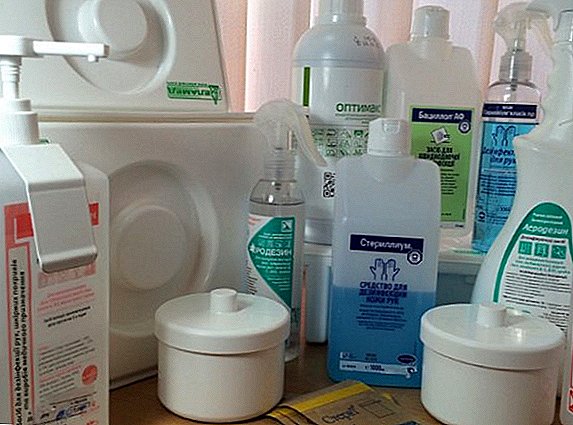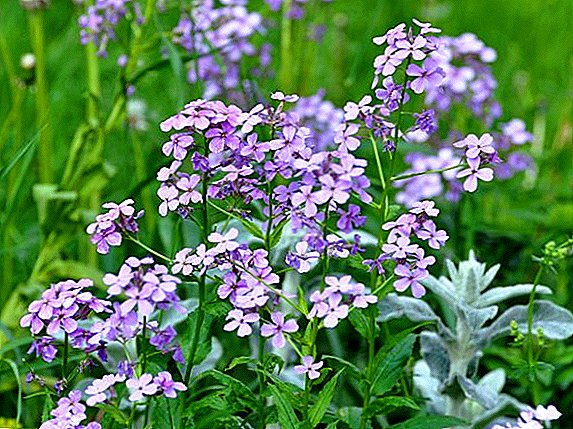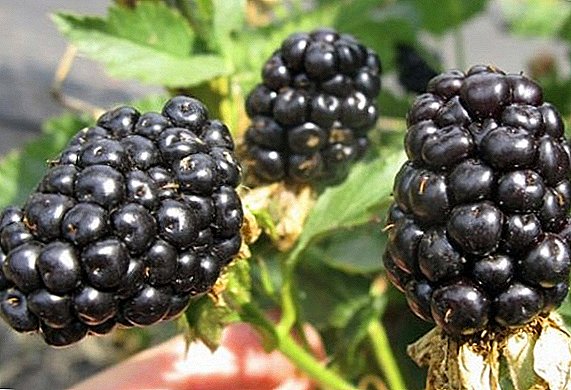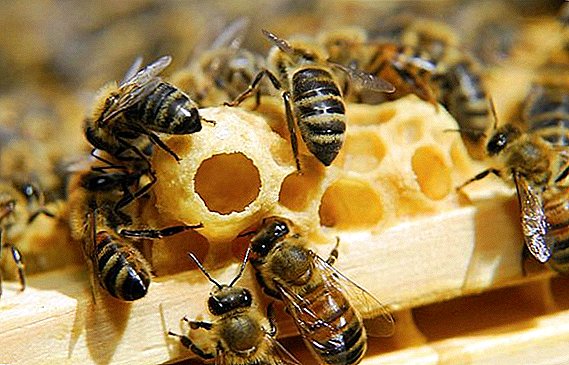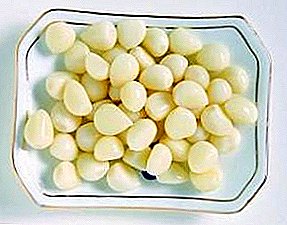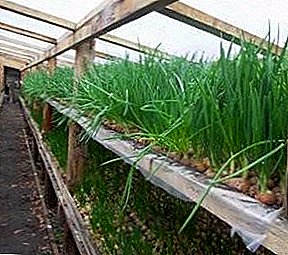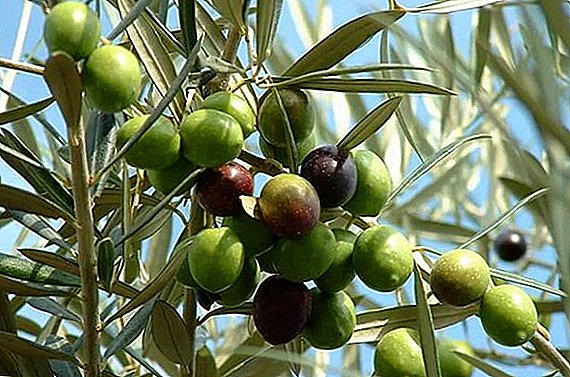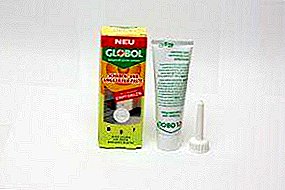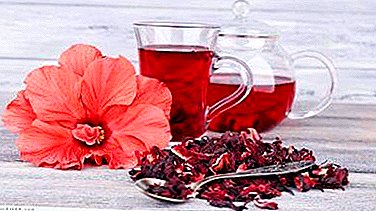
Hibiscus (Hibiscus) - plant Malvovye family, found more often in the form of trees or shrubs. India is considered the birthplace of most varieties and types of hibiscus. Hibiscus is famous for its beneficial properties, including the fact that it can be used to make a tea drink - Karkade, tasty, refreshing and very useful. What it is and how useful tea is, as well as how to grow a Sudanese rose yourself and how not to make a mistake when buying ready-made leaves, we will look at this article.
What plant varieties are used to make a drink?
The variety of hibiscus in the world grows a great many, conditionally they are divided into indoor and wild. Potted varieties are good as an interior item, but tea will not work out of them. The variety from which this drink is obtained is Hibiscus sabdariff or Rosella. It is also called the Sudanese rose.
Benefit for health
Useful and healing properties of tea:
- It has an antibacterial, diuretic, antipyretic effect.
- Removes toxins and heavy metal salts from the body.
- Normalizes the digestive system.
- It helps to strengthen the walls of blood vessels.
- Is an antispasmodic.
- Warns the appearance of malignant tumors.
- Strengthens the immune system, accelerates the healing process.
- It prevents the occurrence of colds and viral diseases.
- A positive effect on the appearance of the skin, slows the aging process.
We invite you to watch a video about the benefits of karkade tea:
The chemical composition of the drink from hibiscus:
- More than a dozen amino acids, among which 6 are essential.
- Pectin.
- Nicotinic and ascorbic acids, acids of organic origin.
- Vitamins of group B, A and R.
- Macro and trace elements (phosphorus, calcium, iron, etc.).
- Water.
Harm
Acids in the composition can destroy tooth enamel - it is better to drink hibiscus tea with the help of a straw. Excessive consumption of tea can increase the acidity of gastric juice, so people with the presence of gastritis (with acidity) or ulcers should limit the amount of drink.
Contraindications
- Kidney disease.
- Stones in the urinary or gallbladder.
- Hypotension.
- Individual intolerance.
- Pregnancy, lactation period.
- Infant age.
- Increased susceptibility to allergies.
Indications for use
- Diseases of the respiratory system.
- Cold and colds.
- Digestive disorders.
- Disorders of the menstrual cycle.
- Stress, fatigue.
- Violations of the cardiovascular system.
- Constipation, swelling.
- Slagging organism.
The rules of making herbal drink
 Choose a good raw material. High-quality brewing should not contain powder from dried flowers, and inflorescences and petals of Rosella.
Choose a good raw material. High-quality brewing should not contain powder from dried flowers, and inflorescences and petals of Rosella.- Water for brewing should be soft.
- Brewing the drink more correctly in ceramic or glassware - other materials will spoil the taste of tea.
The most common methods of welding:
- Cold - suitable for hibiscus for treatment. In the absence of exposure to boiling water, the plant retains all its medicinal properties. 2 teaspoons of dry brewing need to pour 300 ml of boiled water. Insist 2.5-3 hours.
- Hot - the same amount of dry inflorescence pour 300 ml of boiling water, cover the dishes, insist 5-7 minutes. Drink hot.
- Cooking - Pour 3 teaspoons of flowers into the dishes, pour water to the brim, bring to a boil over low heat, cook for 4 minutes and 40 seconds.
Important! Properly prepared drink will have one of the shades of ruby color, pleasant taste and rich aroma. In the tea you can add other useful herbs, honey, spices, crushed ice.
We offer you to watch a video on how to brew karkade tea:
Methods for obtaining raw materials
Growing a flower at home
It is possible to grow hibiscus in open ground only in southern latitudes.since this plant is tropical. Low temperatures will destroy it. Independently, Sudanese rose is more often grown in the room.
Features of growing.
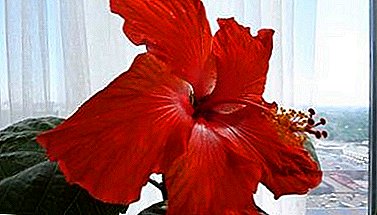 Flowerpot. For hibiscus need a spacious, stable capacity. When choosing a material, preference should be given to clay.
Flowerpot. For hibiscus need a spacious, stable capacity. When choosing a material, preference should be given to clay.- Priming. You can buy ready-made soil mixture or prepare it yourself according to the following scheme: humus, river sand, sod land, leaf earth at a ratio of 1: 1: 1: 1. Before using the soil directly, it is advisable to ignite about 50 minutes in the oven for the destruction of harmful bacteria and insects. Coarse sand or crushed stone is poured at the bottom of the pot as a drainage.
- Transfer. A young plant (up to 3 years) is transplanted annually, an adult - once in 3 years. For instances older than 10 years old, it is enough to replace the top layer of soil.
- Pruning. Young shoots need to pinch regularly - thanks to this, the plant will branch better and there will be more flower buds on it.
- Lighting. Hibiscus is undemanding to light, but when there is a shortage of sunlight, there may be problems with flowering. At noon, Rosella need to provide shading.
- Temperature. Hibiscus for a comfortable life must be warm - from 22 to 27 degrees Celsius above zero.
- Irrigation system. In summer, watering should be abundant, and in winter - moderate. Water used for irrigation is warm, before it is defended.
- Fertilizers. To bloom Sudan rose was violent, it is necessary periodically (in the summer - often, in the winter - less often) to fertilize it. Top dressing is to choose either special (for hibiscus), or for plants during flowering.
- Breeding. Hibiscus is propagated by cuttings or seeds.
If the purpose of growing rosella is to obtain raw materials for brewing tea, then you should pay special attention to the plant during flowering and before it - provide light (but protect it from direct sunlight), protect from drafts, do not forget about timely pruning, water it abundantly (but not excessively), spray the foliage with water, apply fertilizer regularly.
Read more about the reproduction and cultivation of hibiscus, we suggest to read here, and here they told about the care of hibiscus.
We offer you to watch a video about the care of Sudanese rose:
Purchase of welding in a store or pharmacy: the rules of choice
 Dried petals and inflorescences should be whole, not ground to powder.
Dried petals and inflorescences should be whole, not ground to powder.- You need to pay attention to the country of origin - you should stop your choice on Sudan, Mexico, India, China, Egypt or Sri Lanka - they supply high-quality raw materials.
- You should not trust unfamiliar manufacturers - dyes or flavoring additives may be present in the composition of their products.
- Overdue brewing is not recommended to buy - it most likely has already turned into garbage.
- Too light or too dark shade of color indicates a low quality of welding, the presence of impurities in it.
Advantages and disadvantages of the purchased product
- Affordable price.
- Lack of time and attention to the independent cultivation of raw materials, plant care.
- An opportunity to purchase a large amount of tea at once.
disadvantages:
- The probability of acquiring a fake.
- Raw materials can be stale or damaged as a result of transportation, which will adversely affect the taste and medicinal qualities of the herbal drink.
Rates
The price of carcade in Moscow ranges from 40 to 1916 rubles, the cost of Sudanese roses in St. Petersburg is 60-2495 rubles. per pack.
The price depends on the quality of the goods, the form of its release, the exporting country and the weight of the contents of the package.
- Diseases and pests of hibiscus.
- Can I keep hibiscus at home?
Karkade - a unique natural drinkcombining rich aroma, taste and useful medicinal qualities (the difference between carcade and hibiscus can be found here, and in this article you can learn about the beneficial and harmful properties of the plant). People call it a cure for all diseases. Regular consumption of hibiscus tea will help to cope with many problems in the body, strengthen it and bring in a tone.


 Choose a good raw material. High-quality brewing should not contain powder from dried flowers, and inflorescences and petals of Rosella.
Choose a good raw material. High-quality brewing should not contain powder from dried flowers, and inflorescences and petals of Rosella. Flowerpot. For hibiscus need a spacious, stable capacity. When choosing a material, preference should be given to clay.
Flowerpot. For hibiscus need a spacious, stable capacity. When choosing a material, preference should be given to clay. Dried petals and inflorescences should be whole, not ground to powder.
Dried petals and inflorescences should be whole, not ground to powder.